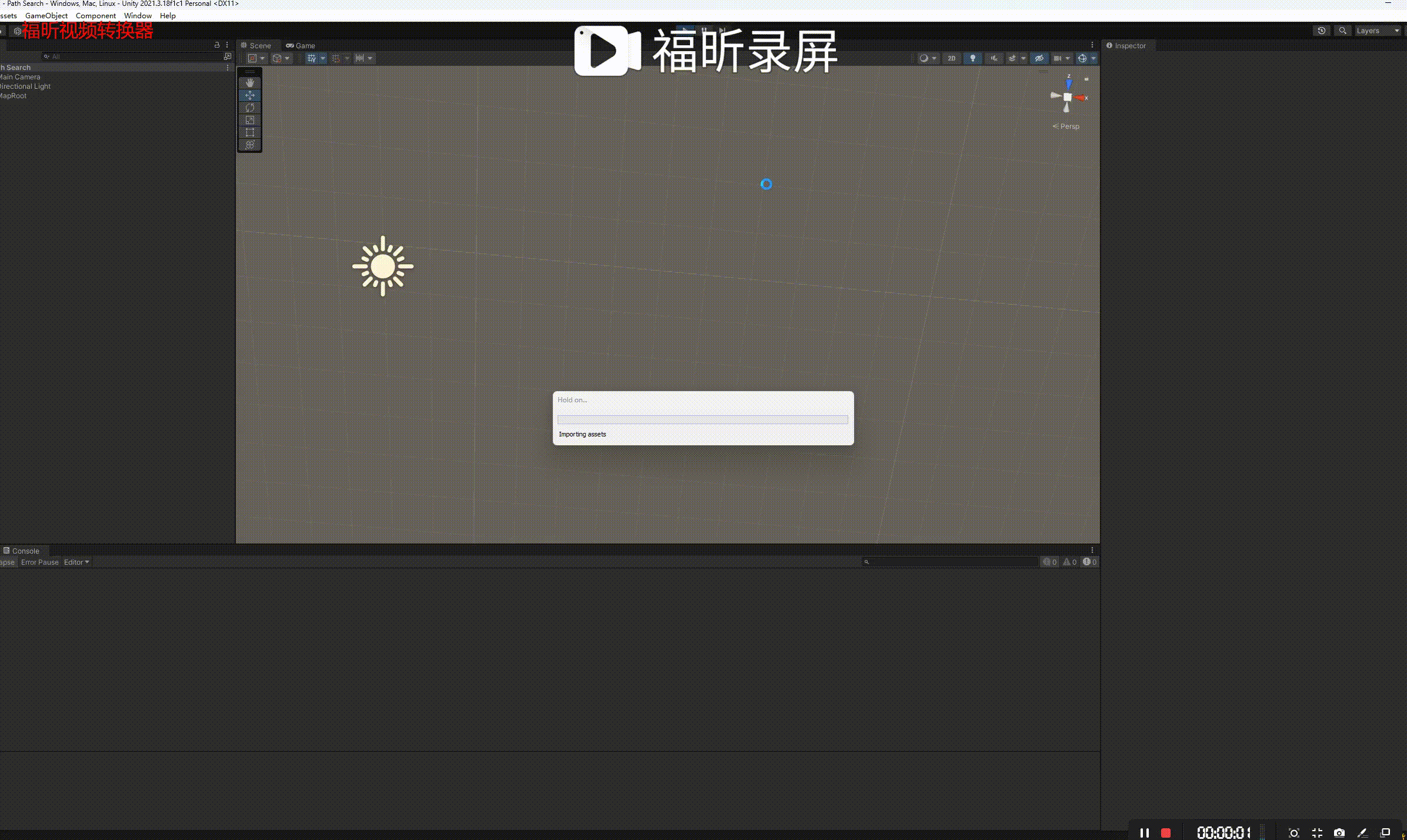A*(A-star)是一种图遍历和寻路算法,由于其完整性、最优性和最佳效率,它被用于计算机科学的许多领域。给定一个加权图、一个源节点和一个目标节点,该算法将找到从源到目标的最短路径(相对于给定的权重)。
算法过程:遍历方向为从竖直向上沿顺时针方向。
1.首先计算开始节点的G,H,F值,将开始节点放入检测列表中。
2.将检测列表中的所有点按到目标所需的成本的估计值F排序,选择F最小的节点作为当前节点。
3.将当前点从检测列表中移除,加入到已检测列表中。
4.计算当前点周围的八个点G,H,F值,将不包含在检测列表中的点加入到检测列表。
5.重复2,3,4,直到找到目标点。
注:
F = g (n)+ h(n)
g (n ) 是从起始节点到 n 的路径的成本,h (n) 是一个启发式函数,用于估计从 n 到目标的最便宜路径的成本。
代码实现:
改造路径点数据类:
cs
public class DataNode
{
public Vector2Int pos;
public DataNode parent;
//A*使用
public int gCost = 999999999;
public int hCost;
public int fCost;
public DataNode(Vector2Int pos, DataNode parent)
{
this.pos = pos;
this.parent = parent;
}
//A*使用计算F
public void CalculateFCost()
{
fCost = gCost + hCost;
}
}算法类:
cs
public class AStar : FindPathAlgorithm
{
public AStar(int[,] mapData, int xCount, int zCount) : base(mapData, xCount, zCount){}
public override List<Vector2Int> FindPath(Vector2Int startPos, Vector2Int goalPos)
{
DataNode dataNode = this.AStarFind(startPos, goalPos);
if (dataNode == null)
{
Debug.LogError("寻路有误,请检查参数是否正确");
return null;
}
return Utils.GetPath(dataNode);
}
DataNode AStarFind(Vector2Int startPos, Vector2Int goalPos)
{
//存储要检测的点
List<DataNode> frontier = new List<DataNode>();
//存储已经检测的点
List<Vector2Int> reached = new List<Vector2Int>();
DataNode startNode = new DataNode(startPos,null);
startNode.gCost = 0;
startNode.hCost = CalculateDistanceCost(startPos, goalPos);
startNode.CalculateFCost();
frontier.Add(startNode);
while (frontier.Count > 0)
{
DataNode currentNode = GetLowestFCostNode(frontier);
if (currentNode.pos == goalPos)
{
return new DataNode(goalPos, currentNode.parent);
}
frontier.Remove(currentNode);
reached.Add(currentNode.pos);
List<DataNode> neighbors = GetNeighbors(currentNode.pos, reached);
foreach (DataNode neighbourNode in neighbors)
{
int tentativeGCost = currentNode.gCost + CalculateDistanceCost(currentNode.pos, neighbourNode.pos);
if (tentativeGCost < neighbourNode.gCost)
{
neighbourNode.parent = currentNode;
neighbourNode.gCost = tentativeGCost;
neighbourNode.hCost = CalculateDistanceCost(neighbourNode.pos, goalPos);
neighbourNode.CalculateFCost();
if (!frontier.Contains(neighbourNode))
{
frontier.Add(neighbourNode);
}
}
}
}
return null;
}
List<DataNode> GetNeighbors(Vector2Int current, List<Vector2Int> reached)
{
List<DataNode> neighbors = new List<DataNode>();
for (int i = 0; i < Utils.pointDir.Count; i++)
{
Vector2Int neighbor = current + Utils.pointDir[i];
if (this.IsCanAdd(neighbor, reached))
{
neighbors.Add(new DataNode(neighbor,null));
}
}
return neighbors;
}
bool IsCanAdd(Vector2Int current, List<Vector2Int> reached)
{
if (reached.Contains(current))
return false;
if (current.x >= 0 && current.y >= 0 && current.x < xCount && current.y < zCount)
{
//如果是障碍物,则不能被Add
if (this.mapData[current.y, current.x] == 1)
{
return false;
}
return true;
}
return false;
}
private int CalculateDistanceCost(Vector2Int a, Vector2Int b)
{
return Mathf.Abs(a.x - b.x) + Mathf.Abs(a.y - b.y);
}
private DataNode GetLowestFCostNode(List<DataNode> pathNodeList)
{
DataNode lowestFCostNode = pathNodeList[0];
for (int i = 1; i < pathNodeList.Count; i++)
{
if (pathNodeList[i].fCost < lowestFCostNode.fCost)
{
lowestFCostNode = pathNodeList[i];
}
}
return lowestFCostNode;
}
}结果:

参考链接: